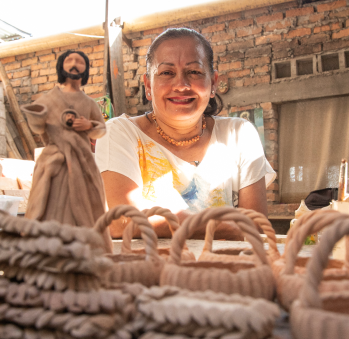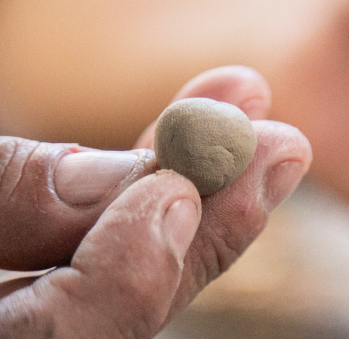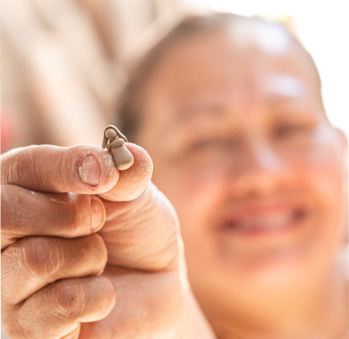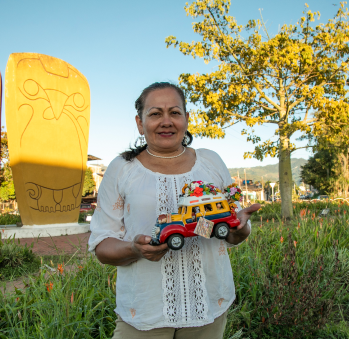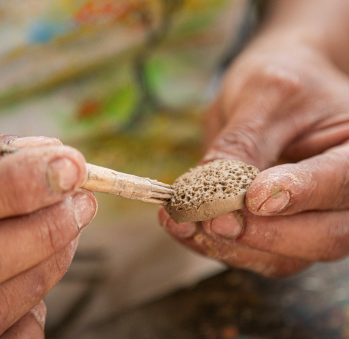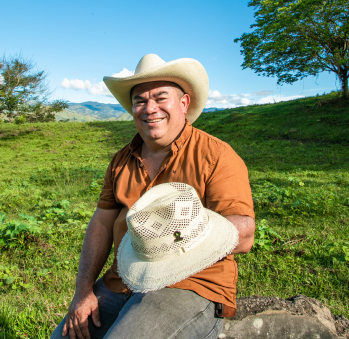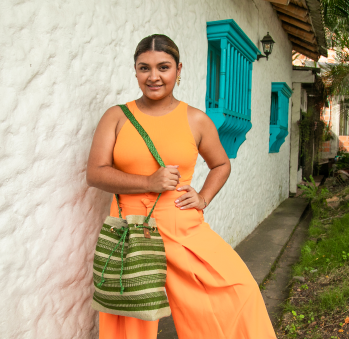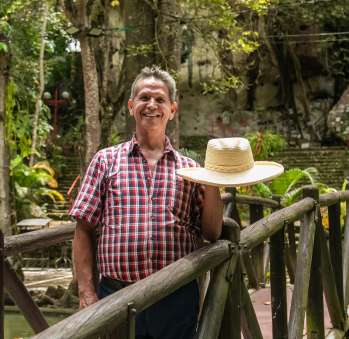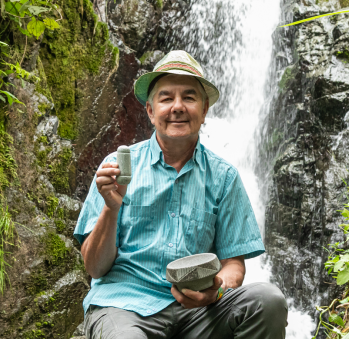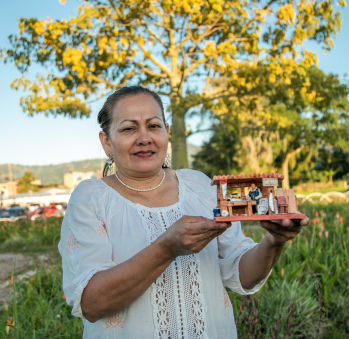Ruth Polo
Workshop: Copoarte
Craft: Alfarería y cerámica
Trail: Huila Route
Location: Pitalito, Huila
SCHEDULE YOUR VISIT
Calle 17 # 4-100, Pitalito, Huila
3138734991
copo_arte@hotmail.com
This story begins with a young girl who enjoyed playing with the clay ants scattered around their nest. She was the youngest of ten siblings and liked to make small clay pots and doves, and sell them to her brothers and sisters. When this girl, Ruth Polo, turned eight, she started working with the Vargas family, skilled potters who had migrated from Garzón. Upon arriving in Pitalito, they began crafting traditional chivas. Ruth’s brothers were already part of this family’s work, and when she brought them lunch at midday, she was captivated by their use of clay and longed to join in. She would study in the morning and be a potter apprentice at the Varga’s in the afternoon. This routine continued for five years until, at thirteen, she established her own workshop at her mother’s house. Here, she crafted clay orchids, fruits, and flowers. Her talent garnered attention, leading to commissions from her mentors, allowing her to eventually hire two additional workers. In time, she displayed her creations at artisanal fairs in Pitalito, Medellín, Neiva, and Bogotá.
The essential tools in her workshop are the bamboo spatula and blade. With these implements, she meticulously shapes each element of her rural and nativity scenes. Memories from her childhood on her family’s farm in Solarte inform her costumbrist ceramics. Ruth remembers the bahareque and bamboo house, the corrugated tin roofs, the windmill, the pilón, and the wood-fired oven where hot chocolate would bubble over. She recalls the glazed vessels, the orchids, and the aloe adorned with a purple ribbon hanging on the wall. She also recalls the people, the visitors seated on the ever-present bench, offered coffee and pastries by her mother. All these people and details from her past reside within her craft. Her nativity scenes, inspired by various Colombian regions such as Huila, Antioquia, Bogotá, Boyacá, and the Caribbean, are worthy of a close look. For example, in the Huila nativity, Virgin Mary wears a sanjuanero-style white blouse with flutter sleeves and golden trim, and Joseph wears the customary white suit with a red handkerchief, hat, and espadrilles. The three wise men bear Huila’s traditional dishes—barbecue, tamales, chicha, and lechona. An angel strums a guitar, providing music for the birth of baby Jesus, clad in a light, sleeveless shirt due to Huila’s warm climate.
Ruth still enjoys working with clay as if she was playing. She has a keen eye for detail, crafting scenes as if they were a doll’s house, and giving life to the owners of those little houses: the contrywoman dolls. Ruth sculpts distinct hairstyles for each figure, with a twisted bow to a side or on the crown of the head, with one or multiple braids. She creates the bread or flower vendors, who carry baskets filled with blooms from her own garden—lilies, roses, daisies, carnations, or bird of paradise flowers. After molding flowers, arms and nails, she fires them individually before applying vinyl paint. Finally, she varnishes and assembles them. Her husband Germán Collazos, her son Germán, and daughter Tatiana work alongside her, with Tatiana helping with painting. Ruth’s grandson, Johan Camilo, also finds joy in clay play, and she would be immensely proud if he were to follow in his grandmother’s footsteps.
Just as she has shared her craft with Johan Camilo, Ruth has also taught children in schools and shelters. Recently, she led a workshop for a group of Ynaconas indigenous people in Palestina, Huila. After presenting her methods and sharing her playful working spirit, she encouraged them to shape their surroundings—crops, foods, tobacco, smoking pipes, spikes, corn, and homes with yaripá roofs. Simultaneously, Ruth absorbed knowledge about the distinct colors of their clay, which are tied to its origin, enriching this craft, as vast as the whole Earth’s soil.
Craft
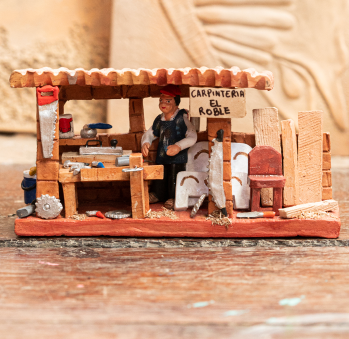
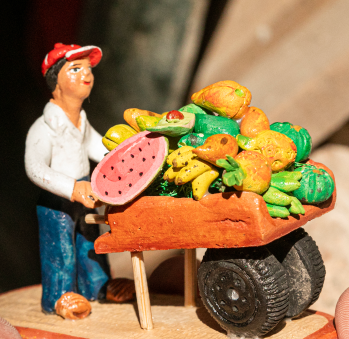
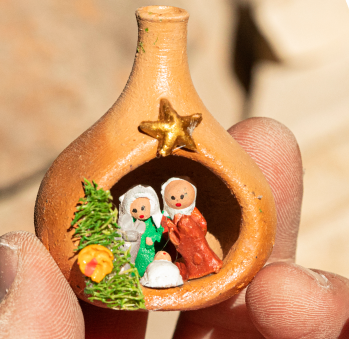
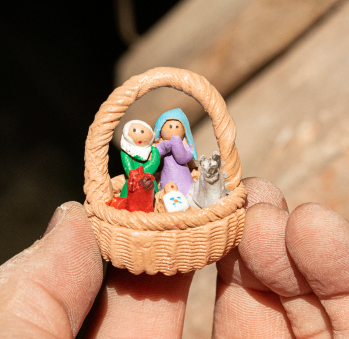

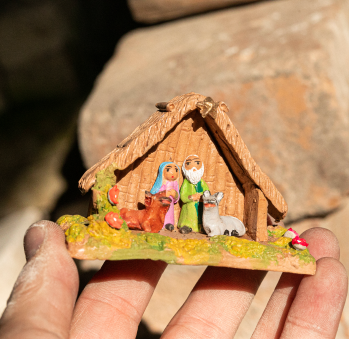

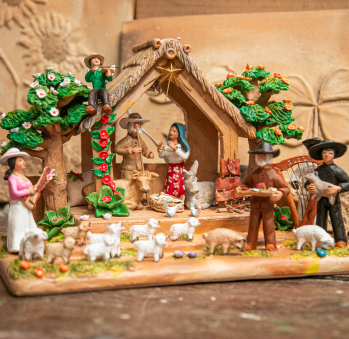








Artisans along the way
Artisans along the way
No puede copiar contenido de esta página










































